Sitting below the main downtown, the unassuming limestone structure is one of only two surviving railway structures from what was once a bustling centre of rail activity throughout the latter half of the 19th century. It is also interesting that it is the oldest continuously operated railway station in all of Ontario.
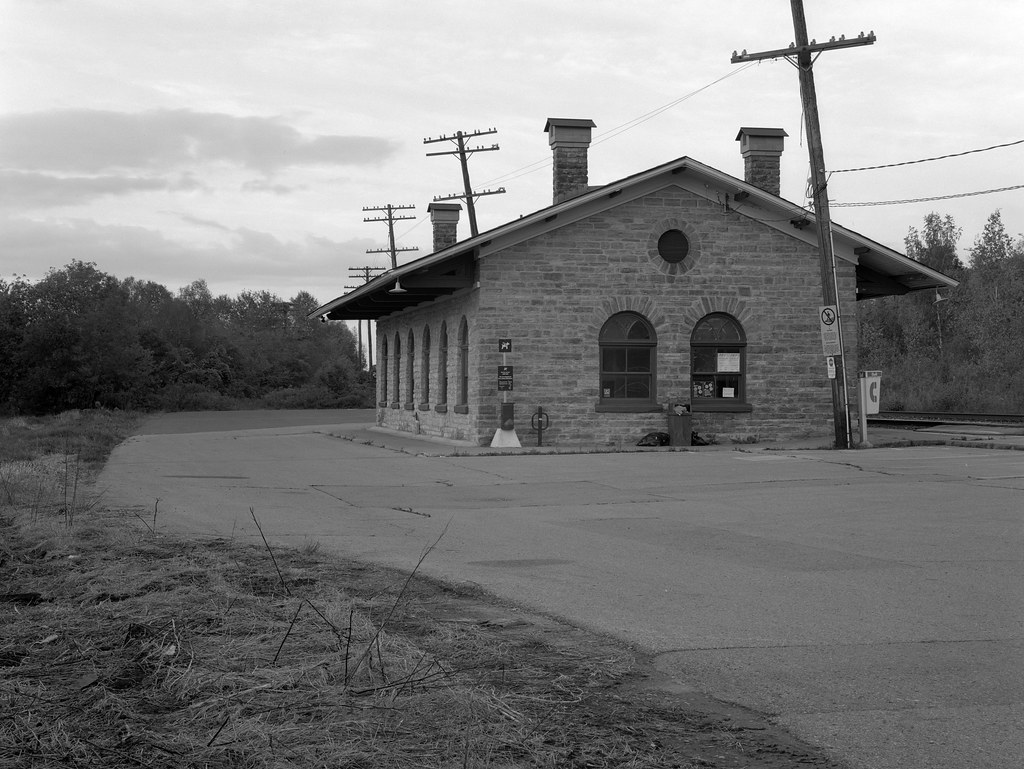
Crown Graphic – Nikon Nikkor-W 180mm 1:5.6 – Ilford HP5+ @ ASA-200 – Pyrocat-HD (1+1+100) 9:00 @ 20C
Creating a standard set of stations set Grand Trunk apart from the other three railway operators in the first railway boom in Ontario. Chief Architect Francis Thompson latched onto the fundamental design ethos of British railway or wayside stations and laid out three different wayside stations, class A, which featured seven openings; class B with six; and class C with five. These all followed the same basic design and would be constructed from limestone, featuring a well-appointed simple interior design that is well-lit and well-heated. Most of the stations completed along the mainline between Toronto and Montreal were of Type B, and the Port Hope station is a premier example of this class. Construction work on the station started in 1855, using local limestone as the exterior material, with the contract for construction going to Brassey, Peto, Betts & Jackson. A simple Italianate design with a low peaked room, rounded tops to the bays, and a wide overhang provide some measure of protection from the elements. Inside a single waiting room with a gas fixture, plaster walls, wainscotting and hardwood floor. Passengers could wait on several wooden pew-like benches. Tickets were bought through a ticket window that opened into the Station Master’s Office. The second half of the station was taken up by the baggage room. Grand Trunk also constructed a small railyard with a house for the Station Master, a coaling and water tower, a small engine shop and freight sheds. Although the great addition to Port Hope, the Albert Viaduct, a single-track rail bridge over the Ganraska River, marked Grand Trunk’s first major hurdle in completing their mainline. The railway and the station provided an economic boost to the community upon opening in 1856. It also marked a shift in the construction of new buildings in Port Hope with favour towards limestone construction and greater attention to detail and quality.

Nikon D750 – AF-S Nikkor 28-70mm 1:2.8D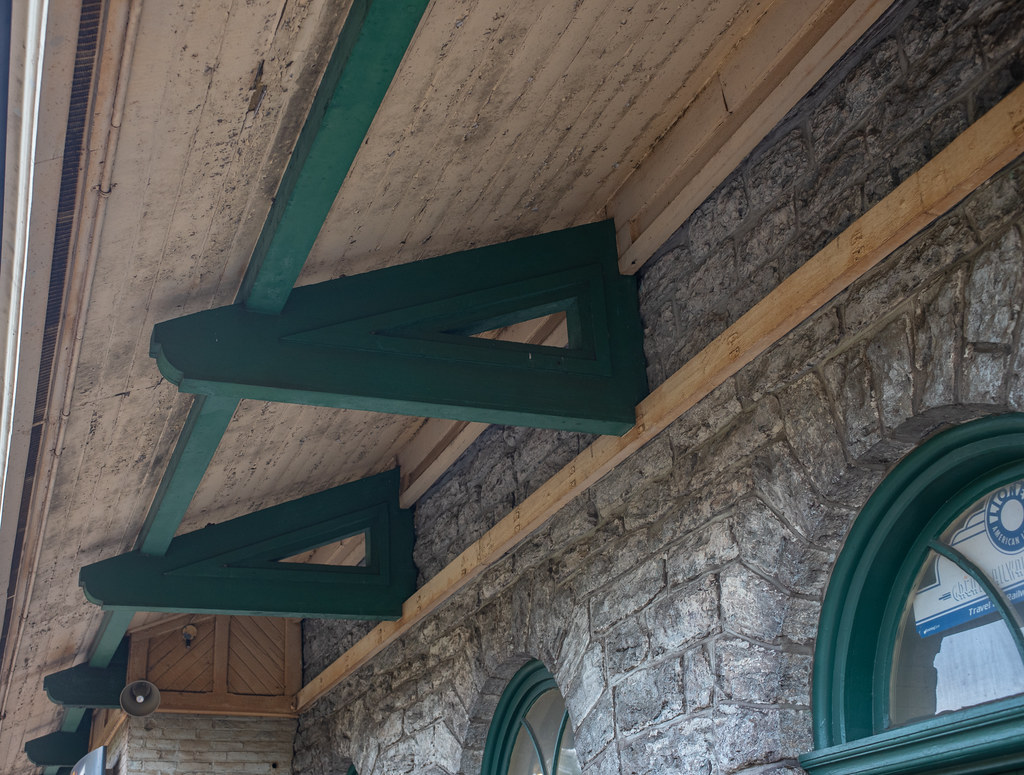
Nikon D750 – AF-S Nikkor 28-70mm 1:2.8D
The station received a small brick telegraph operator bay in 1881. The bay was jutting out onto the platform, allowing the operator to see the tracks in both directions. The Viaduct was updated in 1893 when Grand Trunk added a second track along the mainline. Even at the turn of the century, the quality construction of these early stations proved their worth, and none were replaced during Charle Haye’s modernization program. By the 20th Century, Port Hope was awash in railways, and most were under Grand Trunk’s control, the biggest being the Midland Railway which operated a large roundhouse in the community. This proved helpful in Grand Trunk as a way to spread maintenance work between different yards. However, other financial missteps and the death of Charles Hayes forced Grand Trunk to go bankrupt and become a part of the growing Canadian National Railway in 1923. Operations at Port Hope continued at the station while the rest of the buildings were systematically torn down as the century marched onwards. Despite the efforts by CN to rebrand itself in the 1960s, the station avoided any major renovation work, retaining many original features. I cannot even find any evidence that the exterior was painted. The same cannot be said of the station’s interior. The benches, coal stoves, and fixtures were moved into storage, and modern lighting and heat were installed. Even the chimneys were torn down. Even the roundhouse met the wrecking ball at the end of the age of steam. When VIA Rail took over passenger service in 1978, Canadian National demolished the station and built a small modern station.
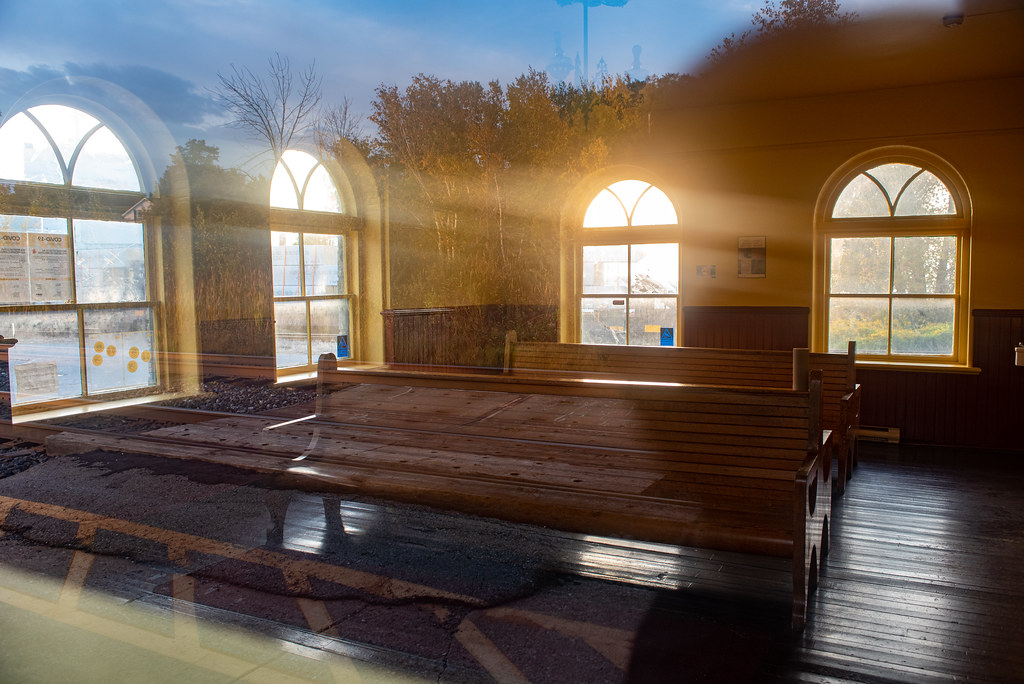
Nikon D750 – AF-S Nikkor 28-70mm 1:2.8D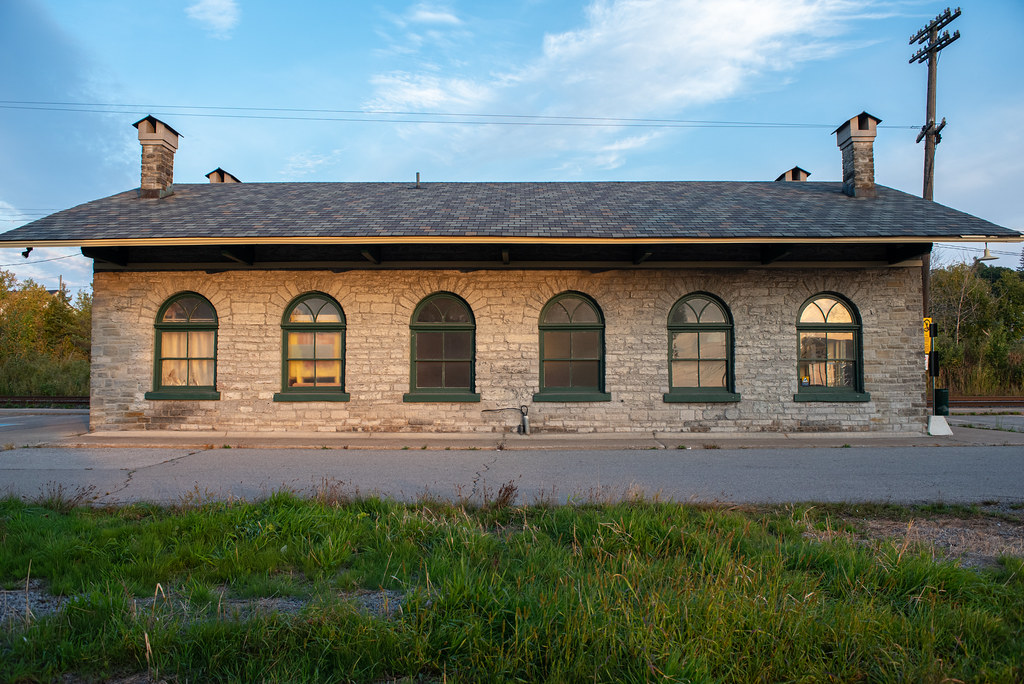
Nikon D750 – AF-S Nikkor 28-70mm 1:2.8D
The community who had come to love their little station met this news with resistance. Bringing in the power of the Ontario Architectural Conservancy and the Ontario Heritage Foundation, efforts were made to preserve the station and many others from the first run of Grand Trunk stations across Ontario. The fight went to the community, and Canadian National took the funds earmarked for construction and used them for conservation instead. Efforts began in 1980; the old chimneys were rebuilt, with one used for an exhaust for the modern heating system. The old waiting room was refreshed and restored, and the wainscots and hardwood floors were refinished. The plaster walls and ceilings were cleaned. Even the brass fixture and wooden benches were returned to their place and polished. The old baggage room was converted into a small commercial space and rented out, and a ticket kiosk was installed. The exterior limestone was cleaned, the east and west walls were rebuilt and refreshed, the windows were replaced with modern glass, and the wooden frames were repainted. Overall the station returned to how it appeared in 1881. Today, the station serves VIA rail as one of two still operating 1856 Grand Trunk stations, the other being in Napanee. It is also the only one of eight original Thompson Wayside stations in Ontario. The station mainly operates during weekdays for those commuters looking to travel by train to work outside of Port Hope.
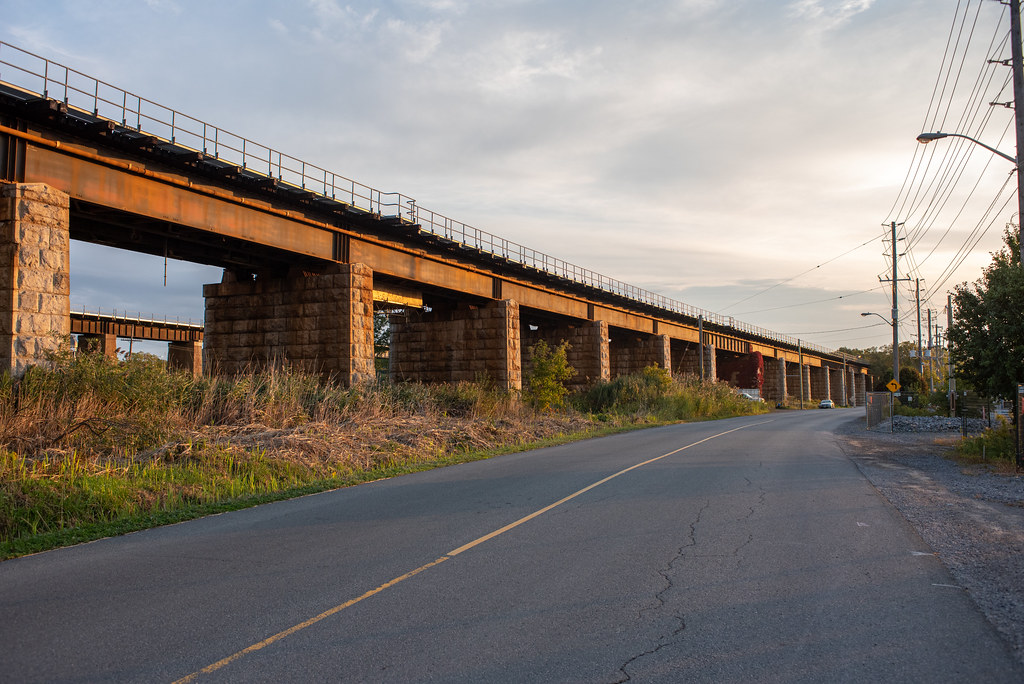
Nikon D750 – AF-S Nikkor 28-70mm 1:2.8D
Piers in the lower image are from the 1887-1893 double tracking of the GTR line. Original GTR piers were 56 brick piers built in 1856 and stretched 1856 feet between the banks of the Ganaraska River Valley.